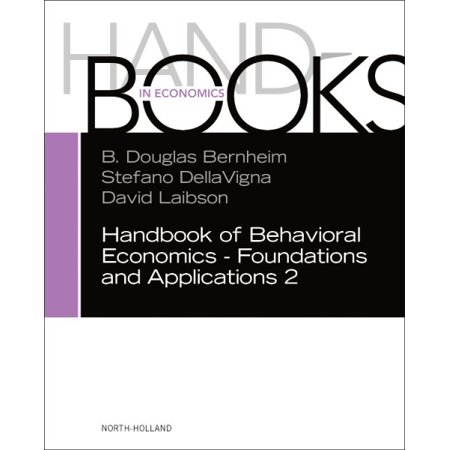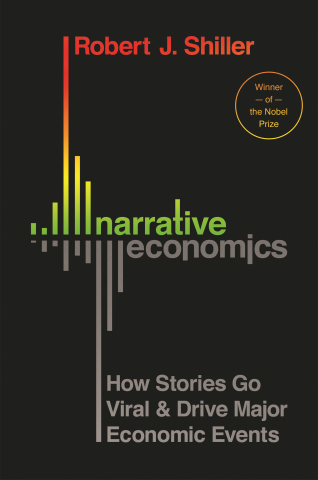
ICF Winter Break Reading List
 Looking for something to read over the holiday break? Have no fear! The ICF has compiled a list of working papers and publications that our Yale SOM Finance Faculty have written on a variety of topics sure to interest any finance fanatic.
Looking for something to read over the holiday break? Have no fear! The ICF has compiled a list of working papers and publications that our Yale SOM Finance Faculty have written on a variety of topics sure to interest any finance fanatic.
Our faculty have a diverse range of research interests including behavioral finance, household finance, housing, gender disparities, commodities, venture capital, monetary policies, corporate finance, IPO’s, machine learning, artificial intelligence, asset management, financial history, and more!
- In his retirement, Professor Jonathan E. Ingersoll Jr. is writing a new PhD level textbook titled, “Financial Models and Theories.” Read the 12 preliminary chapters for part one on single-period models. Chapters covering multi-period models and models of information will be available later at this same site.
 Professors Nicholas Barberis and James Choi both contributed chapters to the “Handbook of Behavioral Economics,” which is a landmark volume that summarizes three decades of intensive efforts to improve our understanding of the economy through psychologically-realistic frameworks. Read:
Professors Nicholas Barberis and James Choi both contributed chapters to the “Handbook of Behavioral Economics,” which is a landmark volume that summarizes three decades of intensive efforts to improve our understanding of the economy through psychologically-realistic frameworks. Read:
- “Psychology-based Models of Asset Prices and Trading Volume,” By Nicholas Barberis
- “Behavioral Household Finance” By James Choi and co-authors John Beshears, David Laibson, and Brigitte C. Madrian
- The Popularity Asset Pricing Model (PAPM) has similar assumptions to the Capital Asset Pricing Model (CAPM), but some different conclusions. Read more about the similarities and differences in: “The PAPM with Heterogeneous Preferences and Expectations,” By Professor Roger Ibbotson and his co-authors.
- Housing wealth represents the dominant form of savings for American households. Read more about, “The Gender Gap in Housing Returns,” by Professors Paul Goldsmith-Pinkham and Kelly Shue.
 In a sample of finance faculty from the top-100 U.S. business schools during 2009–2017, only 15.8% are women. Professors Heather Tookes and Mila Getmansky Sherman analyze the factors that explain the gender imbalance in their paper, “Female Representation in the Academic Finance Profession.”
In a sample of finance faculty from the top-100 U.S. business schools during 2009–2017, only 15.8% are women. Professors Heather Tookes and Mila Getmansky Sherman analyze the factors that explain the gender imbalance in their paper, “Female Representation in the Academic Finance Profession.”
- In “The Commodity Futures Risk Premium: 1871–2018,” Professor Geert Rouwenhorst and his co-authors use a novel comprehensive database of 230 commodity futures that traded between 1871 and 2018 and document that futures prices have on average been set at a discount to future spot prices by about 5%.
- In “Hedging Climate Change News,” Professors Stefano Giglio and Bryan T. Kelly and their co-authors propose and implement a procedure to dynamically hedge climate change risk by extracting innovations in climate news series that they construct through textual analysis of high-dimensional data on newspaper coverage of climate change.
 Professor Song Ma investigates why industrial firms conduct Corporate Venture Capital (CVC) investments in entrepreneurial companies in his paper, “The Life Cycle of Corporate Venture Capital” (forthcoming, January 2020 issue of the Review of Financial Studies)
Professor Song Ma investigates why industrial firms conduct Corporate Venture Capital (CVC) investments in entrepreneurial companies in his paper, “The Life Cycle of Corporate Venture Capital” (forthcoming, January 2020 issue of the Review of Financial Studies)
- Professor Alexander K. Zentefis presents a model in which bank net worth determines both loan market competition and monetary transmission to firm borrowing rates in his paper, “Bank Net Worth and Frustrated Monetary Policy”(forthcoming, Journal of Financial Economics)
- Evaluating how factor premia vary over time and across assets classes is challenging due to limited time series data, especially outside of U.S. equities. Professor Tobias J. Moskowitz and co-authors examine four prominent factors across six asset classes over a century in their paper, “How Do Factor Premia Vary Over Time? A Century of Evidence.”
 Why do IPO firms’ rivals tend to experience performance declines following an IPO in the industry? Professors Matthew Spiegel and Heather Tookes estimate a dynamic structural oligopoly model to distinguish between alternative theories that can explain an industry’s evolution post-IPO in their paper, “Why Does an IPO Affect Rival Firms?”
Why do IPO firms’ rivals tend to experience performance declines following an IPO in the industry? Professors Matthew Spiegel and Heather Tookes estimate a dynamic structural oligopoly model to distinguish between alternative theories that can explain an industry’s evolution post-IPO in their paper, “Why Does an IPO Affect Rival Firms?”
- “How Alternative are Private Markets?” Professor William Goetzmann and co-authors estimate a parsimonious set of factor portfolios out of a comprehensive panel of private market funds and test whether these private market factors are spanned by commonly used public equity factors, and whether they are priced in the cross-section of private market funds.
- The academic literature and policy community remain unsettled about the role of repo runs, because detailed data on repo quantities is not available. In their paper, “The Run on Repo and the Fed’s Response,” Professors Gary Gorton and Andrew Metrick and their co-author provide quantity evidence of the run on repo through an examination of the collateral brought to emergency liquidity facilities of the Federal Reserve.
- Using high-frequency identification, Professor William B. English and co-authors estimate the reaction of bank stock prices to movements in interest rates prompted by FOMC announcements and examine how this reaction varies with key bank characteristics in their paper, “Interest rate risk and bank equity valuations.”
 In a world in which internet troll farms attempt to influence foreign elections, can we afford to ignore the power of viral stories to affect economies? In this groundbreaking book, Nobel Prize–winning economist and New York Times bestselling author Robert Shiller offers a new way to think about the economy and economic change. Using a rich array of historical examples and data, Shiller argues that studying popular stories that affect individual and collective economic behavior—what he calls "narrative economics"—has the potential to vastly improve our ability to predict, prepare for, and lessen the damage of financial crises, recessions, depressions, and other major economic events.
In a world in which internet troll farms attempt to influence foreign elections, can we afford to ignore the power of viral stories to affect economies? In this groundbreaking book, Nobel Prize–winning economist and New York Times bestselling author Robert Shiller offers a new way to think about the economy and economic change. Using a rich array of historical examples and data, Shiller argues that studying popular stories that affect individual and collective economic behavior—what he calls "narrative economics"—has the potential to vastly improve our ability to predict, prepare for, and lessen the damage of financial crises, recessions, depressions, and other major economic events.
